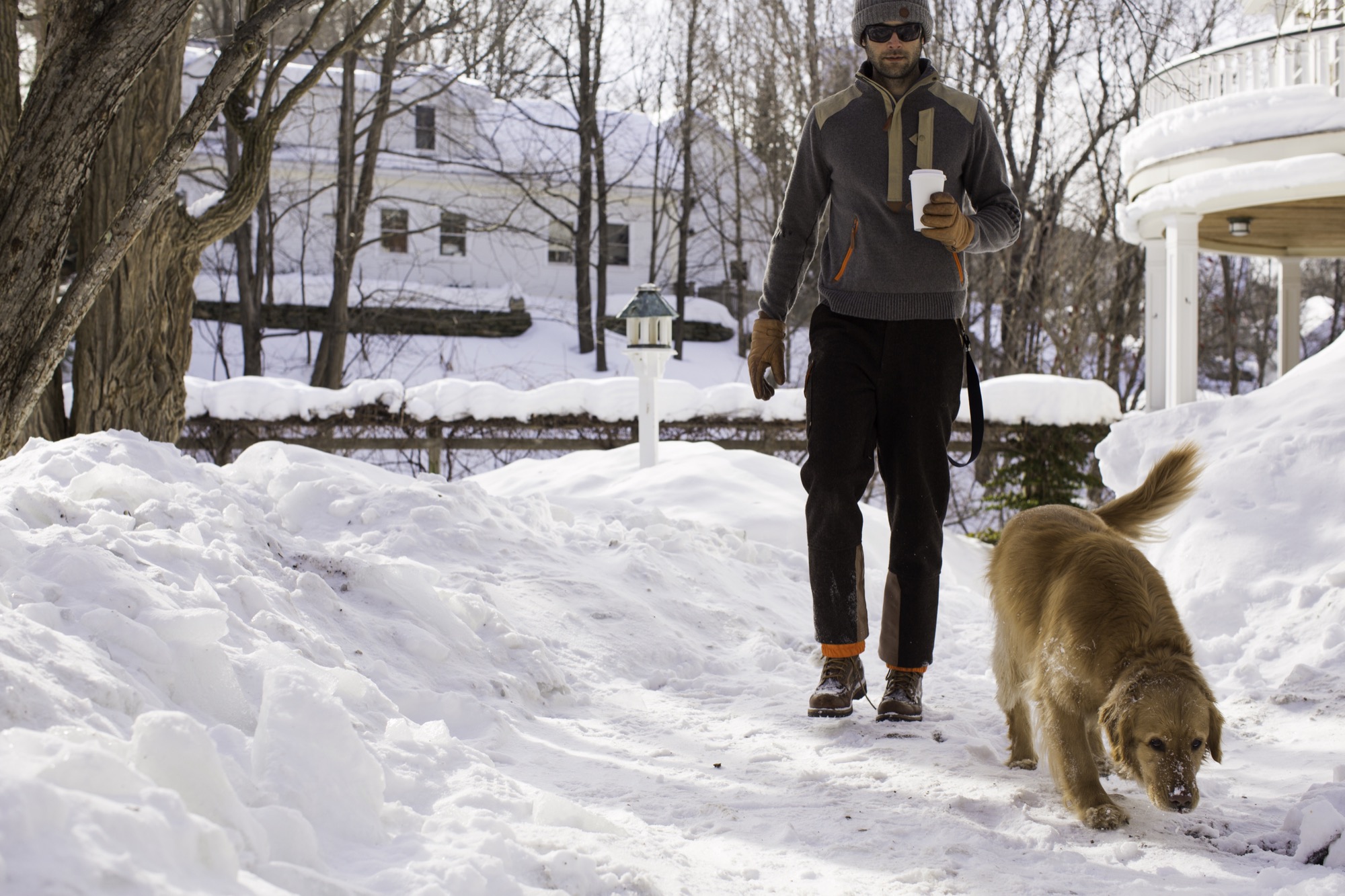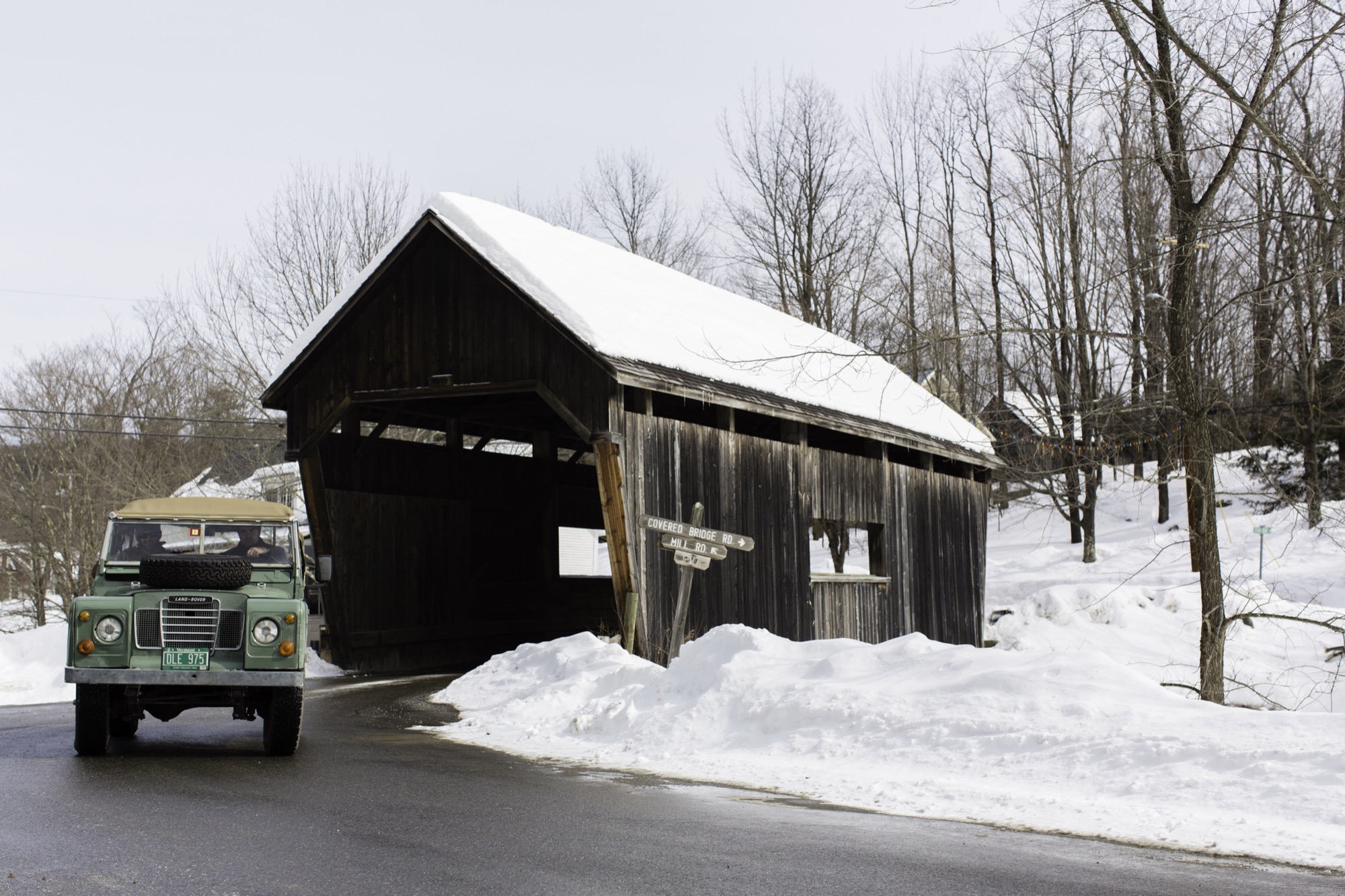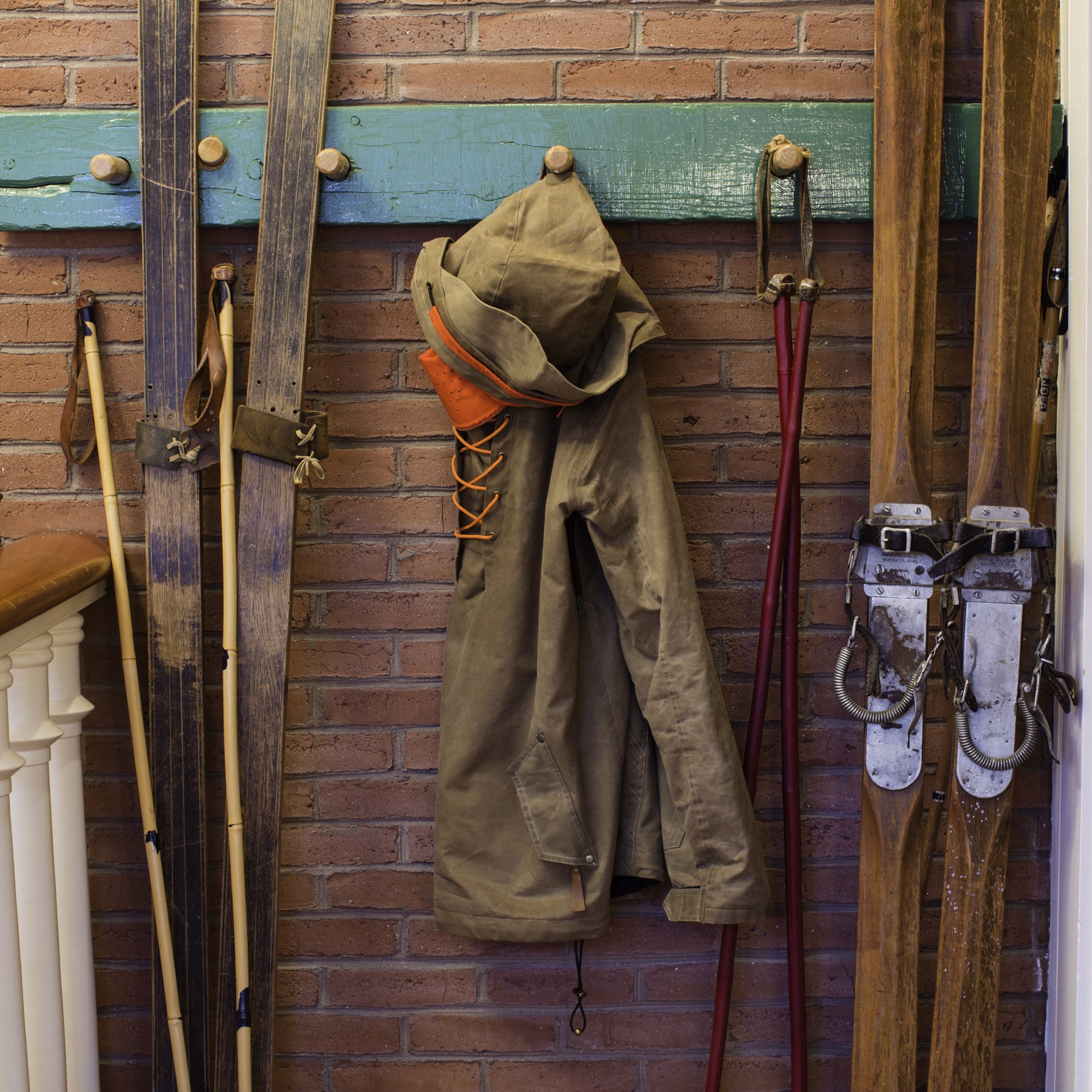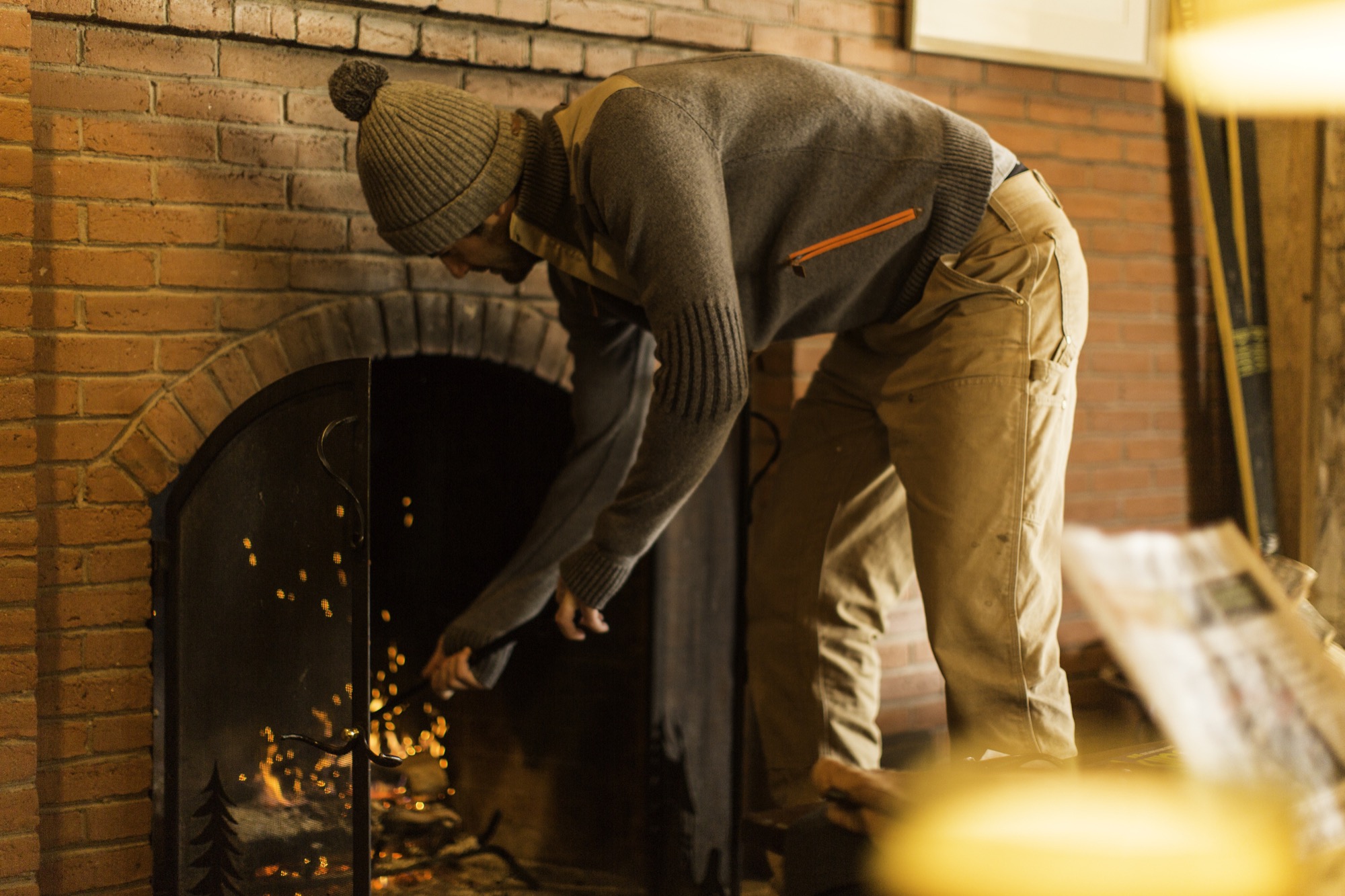
Inspirations
Explore the elevated life in the mountains. This content debuted in 2015 with Alpine Modern’s printed quarterly magazine project.
Louis Joseph on Alpine Authenticity and an Old Sweater
An uplifting conversation with the founder of the Boston-based outdoor garment label Alps & Meters
Nostalgic and progressively technical at once, the rare outerwear garments of Boston-based Alps & Meters reflect an appreciation for the authentic alpine adventures founder Louis Joseph has experienced in mountain villages around the world.

AM Your idea to start a performance outerwear brand was inspired by a trip to Sweden and a vintage ski sweater. What’s the birth story of Alps & Meters?
LJ I’ve always been an alpine sports enthusiast, primarily skiing, and I’ve traveled the world to places near and far for it. I was on a trip to Sweden—could be as many as fifteen years ago now—and I bought a vintage knit ski sweater with very interesting technical attributes. Ever since that time, the garment traveled with me wherever I went. It became a significant conversation starter in places like New Zealand, the Rocky Mountains, Europe. I let a lot of these conversations wash over me and started to think more deeply about what was so interesting and appealing about that particular piece. That was probably the springboard for Alps & Meters, trying to understand what people responded to, from the romantic nature of that piece to its technical attributes, these beautiful, rich knitted fibers, which is a bit of an art now that is lost and forgotten. That sweater transports you to a different time and place, perhaps a little simpler. There is a truth woven into that garment I felt might give life to a brand.

"There is a truth woven into that garment I felt might give life to a brand."
AM Years of research and travel went into your product creation, until you finally found the right materials and manufacturers...
LJ Yes, I am probably five years into Alps & Meters now, since it was a spark of an idea in my mind. I took many trips to a lot of different destinations, here in the United States and in Asia, to find a factory that would work with a new brand, not only a small brand, but also try to innovate and create a different expression of performance outerwear. We came up with a product-creation philosophy that we call “forged performance.” It’s a marriage of classic garment construction techniques with natural materials, like whole-grain, water-repellent leathers and nano-coated yarns, and bundling that together with contemporary technology. Many factories found the complexity too difficult to digest. I ultimately found a family-owned company in Taiwan that has been knitting garments in a very sophisticated way for decades.
I was global director of strategy and innovation at Puma and actually moved to its headquarters in Germany. I left that job a couple of years ago, turned our website on to gauge a demand for the concept, and here we are.

AM What does your brand name—Alps & Meters—represent?
LJ We wanted to convey a sense of tradition and a classic appreciation for authentic alpine sports. Obviously, the Alps came to mind in terms of all their transportational values, and this very traditional, true atmosphere. The word meters has a double meaning within the context of our brand: meters not only in terms of height and the expansiveness of mountains and ranges, but meters is also the unit of measurement for tailors. We wanted to have that underlying meaning closely connected to the brand, because we are really trying to refine our garments and express a form of outerwear that’s very meticulous in terms of attention to detail and the materials we are using. This unit of measure helps us to think very creatively of tailoring the pieces in a manner that is not only differentiated but still provides first-class, on-mountain fit and protection. I always think of the old tailors’ measuring tape, that really rich, yellowed meter tape. And we love the ampersand in the brand name. “Alps & Meters” has a bit of an old-world family feeling to it that I think is nice and sturdy.
AM What makes you a mountain man at heart?
LJ I grew up skiing, primarily in the United States, and I fell in love with the sport— not only the sport’s individual aspect of being on your own in the mountains and having that quiet and connection to nature, but there was always a camaraderie and a friendliness about the places that I traveled to, where people can affiliate and relate, whether they are in Japan, Europe, South America. It always struck me that that same sensibility was shared and crossed generations. Before I got married, I spent a lot of my money on a couple of interesting ski adventures. I’ve skied in the summer, too. I’ve been to Argentina, and I’ve made my way to Chile. I always appreciated connecting with new cultures, primarily in mountain settings, and those simple double-chairlift rides, meeting somebody new, from a different background, a different place, speaking a different language.
It actually has always been a rite of passage and a tradition for the Alps & Meters team to ski a glacier at the top of Mount Washington in New Hampshire’s Presidential Range. It’s about a four-hour hike with full pack, boots, skis. You start below the tree line, and all of a sudden you are in a snowy environment.
AM You have a deep connection to Vermont. Why did you open your office in Boston?
LJ My wife and I got married two years ago at a beautiful inn in Vermont. Much of the concept for Alps & Meters was born from ski trips to Vermont, sitting outside around a fire, snow falling, talking with staff who are avid skiers and alpine enthusiasts. We’ve tried a virtual headquarters in Vermont for some time, but the logistics were really challenging. Alps & Meters has deep roots here, but our team is now settling down in Boston, which is wonderful for logistical purposes, travel to Europe, shipping is very easy.
AM You strive for authenticity. How does this intent translate into your brand?
LJ There is a truth: Authentic places, brands, and people are very comfortable in their own skin. They are not trying to be something else. That is something I love about European skiing, a timelessness and authenticity that crosses generations. It’s wonderful to hike the same trail, ski the same routes, or ride the same lift somebody had done fifty years ago.
At Alps & Meters, we are trying to express a very deep appreciation for classic alpine tradition, and that expression is obviously manifested in the products we are creating. The materials we are exploring are authentic. They are tried and true.
They have always stood the test of time. There are performance characteristics, but their aesthetic is very authentic, and they are a recall to that authentic experience. There is a great confidence in entities that are authentic, and they have a real gravity that can be felt. I’ve been to Chamonix, for example, and it just resonates with authenticity—the people, their respect for the mountains, how they treat one another. It’s one of those very difficult feelings to describe, but you know it when you see it.
“There is a truth: Authentic places, brands, and people are very comfortable in their own skin. They are not trying to be something else.”

AM You launched Alps & Meters with a small collection of three pieces. Talk about your flagship product, the men’s shawl-collar jacket.
LJ We are really trying to make a statement with this shawl-collar jacket and keep our exposure low in terms of the breadth of the product collection. The shawl-collar jacket is a very nostalgic piece from the perspective that it is actually a properly knitted garment. In today’s menswear world, there aren’t many factories or brands that are actually knitting goods. We wanted to revisit proper knitwear that’s protective, warm, has great range of motion and ergonomics, and apply that to an outerwear garment that has a contemporary stance. That type of classic garment construction technique was actually the first wind stopper. You turn the collar up, protect yourself from the wind. It surprises me that that isn’t utilized more within performance pieces manufactured today. Leather is another material we feel has a very timeless nature. What’s special about that versus synthetics is that leather has always been used for maximum durability. It’s still probably one of the most durable materials you can find and apply if you are looking for garment reinforcement and protection. But what we find really intriguing is leather will wear in; it will take on patina in color, and nicks and scratches will become a memory keeper. You remember when the garment was marked a certain way, on a certain adventure.
“You turn the collar up, protect yourself from the wind. It surprises me that that isn’t utilized more within performance pieces manufactured today.”
We have since evolved, and we have six or seven pieces, including a beautiful alpine winter trouser this coming winter. In our next collection, we are also modeling an alpine anorak, a pullover, on a piece that was used by the 10th Mountain Division as a protective snow garment. We are making that from a British-milled impregnated, waxed cotton. It’s windproof, it’s water repellent, and it intrigued us from a performance point of view. Again, I’m surprised that such a highly durable, tactile, beautiful material that will also have interesting wear characteristics wasn’t being used in performance outerwear.

AM Your outerwear may evoke nostalgia in the older generation while appealing to younger winter sport enthusiasts for its performance aspects. Who is your target audience?
LJ When I was traveling in my old Swedish knitwear piece, the age range of individuals who felt my sleeve in the lift line or asked me about that piece was very diverse. We are still trying to learn where the intersection is of our forged-performance differentiation and the interest level, whether it is rational or emotional or a combination therein. We are feeling our way through the dark but are really trying to stay true to what we believe, which is a respect and appreciation for simple, timeless alpine tradition.
Personal Brief: Louis Joseph
Born
1973 in Santa Monica, California
Then What?
After a stint in California, my family moved to Atlanta, Georgia, then settled in Boston, Massachusetts— fittingly, during the Blizzard of 1978. I began skiing in the mountains of New England from a very young age. My earliest years on the slopes were spent in North Conway, New Hampshire, at mountains such as Cannon, Attitash, Cranmore, and Wildcat.
In my post-university years, I gravitated toward telemark skiing after having been intimately introduced to the tradition by a close Italian friend from the Dolomites of Italy.
Now Lives
Boston, Massachusetts, in a quaint area called the South End, a walkable, friendly neighborhood of side- walk restaurants, pubs, and coffee shops.
Lives With
I live with my wife, Vinita. She is my best friend and an adventurous spirit who shares my passion for the mountains and any sort of outdoor recreation.
Favorite Place in the World
My favorite place is to be fireside in an après-ski setting. I find no greater joy than exhausting myself skiing with friends and family and then reliving that shared experience through storytelling, a crackling fire, and the satisfaction that comes with a day well spent on the mountain.
Next Big Journey
My wife is Indian, and we hope to visit India together sometime over the course of the next eighteen months. One of our dreams for this trip is to extend the adventure to Nepal and visit the base camp of Mount Everest.
Life Philosophy
Philosophically, I’m hopeful that I am leading a life in which I have my eyes open to new experiences, a sense of adventure, stay firmly grounded with humble perspective, and express a constant thankfulness for the opportunities afforded me while being kind, considerate, and helpful to those less fortunate.
Favorite Piece of Clothing
I appreciate clothes and equipment that are timeless in their utility and presentation. Therefore, my favorite piece of clothing is my father’s official U.S.-issued peacoat, which he wore while serving in the Coast Guard in the 1950s. Made from heavy boiled wool with a uniquely high collar, this jacket’s cut and sewn simplicity belies a warmth, durability, and protective nature that rivals contemporary outerwear of today. It’s also a powerful memory keeper as my father’s name, military company, initials, and year of issue are scratched on the interior in indelible chalk. When I’m not wearing my Alps & Meters shawl collar jacket, my father’s peacoat keeps me timelessly stylish and warm because of its deep family connection.
Inspired By
My mother and father have been my greatest influence and have been a well of inspiration to me throughout my life. My father is a first-generation American who instilled in me a strong work ethic and a “can-do” mentality. My mother is full of humor, mischief, and adventure, and I thank her every day for teaching me to ski. Their combination of values, imagination, and powerful encouragement have inspired me to follow my passions and, without a doubt, set me on a trajectory to explore, create, and launch Alps & Meters. △
Title photo by Torkil Stavdal
Breakable Minimalism
Maker in the Catskill Mountains: Ceramics artist Kelli Cain creates earthy, minimalist tableware
As she creates earthy, minimalist tableware, Kelli Cain often muses on the people who will sip from her cups and slurp from her bowls. A visit with the many-talented maker in the Catskill Mountains, New York. What is a cup? Is it simply a container for our morning coffee or afternoon tea? Or is it a vessel for more ethereal brews as well—memories of hot chocolates past, aesthetic preferences, even our imagined ties to the person who shaped the cup and the patch of ground where its clay was dug?

These are questions that potter Kelli Cain ponders often as she sits in a sun-filled corner of her farmhouse in the Catskills, throwing cups and plates, coffee pour-overs, and lemon juicers. Cain is thirty-six and—though her earthy, comfortingly simple tableware belies it—just two-and-a-half years into a career as a commercial potter. Before that, she was (and still is) a video artist, composer, and industrial designer. With her husband, Brian Crabtree, she developed a highly successful line of electronic instruments, which the two manufacture under the name Monome from their eighty-year-old refurbished dairy barn. Pottery is one form of creation among many for Cain, and she probes it with the same intense inquiry she applies to them all.
Utilitarian beauty
“I do believe in utilitarian beauty,” she said on a recent afternoon, leaning her red-brown curls against the bank of windows behind her dining table and fixing her clear gray eyes on me. Beyond her, willows, apple trees, and meadow grass formed layer upon layer of green, ensconcing us in a private, summery world that felt much more than its three hours from New York City. “I think it’s really important that we have a respect for everyday objects, and I think the more energy put into a thing, generally the more we have respect for it.”
“I think it’s really important that we have a respect for everyday objects, and I think the more energy put into a thing, generally the more we have respect for it.”

I had driven up to the farm earlier that day, winding into the mountains on Highway 10 past the little town of Delhi with its peeling Victorians and weekend vacationers, and finally down a gravel drive into a valley where a man with buzzed hair and a long red beard stood knee-deep in garlic stalks, clipping off their spiraled tops (this turned out to be Crabtree). Cain was inside, boiling udon noodles and ladling broth into handmade bowls for our lunch.
“These are such magical little nuggets of flavor,” she announced, spooning a sweet-and-sour pickled shiitake from a Ball jar and slicing it into one of the bowls. She and Crabtree grew the mushrooms themselves in a stack of sugar-maple logs below the house. They also cultivate an apple and pear orchard for cider, grow vegetables, raise chickens, hold concerts, make music and art, and run their ceramics and electronic instrument businesses. On the wall of Crabtree’s workshop hangs a beach-towel-sized print by the Minneapolis-based artist Piotr Szyhalski that exclaims, “We are working all the time!” When I asked Cain if the slogan reflected her life with Crabtree, she replied, “If by work you mean doing things we enjoy, then yes.”

That life of shared creation stretches back almost to the day they met, in their first week of graduate school at the California Institute of the Arts. Cain was studying film and experimental animation, Crabtree, musical composition; they met at the library, where Cain was checking out a book on papier-mâché puppets. Very soon, she said, they became “everything”— friends, co-creators, romantic partners. Their first project together was a mechanical installation involving microsculptures and videos. Years later, a similar joint project led Cain to ceramics.
Finding ceramics
For that project, she and Crabtree wanted to make a group of tiny robots tap on clay sculptures inspired by bee and wasp architecture. Despite Cain’s complete lack of ceramic experience, she decided to make the sculptures herself—which, she noted as we slurped our noodles, “was a hilariously naïve thing to do.” Her three-month crash course in ceramics went forward, however, and it turned out Cain was a natural. An elderly classmate even commented that she should do it for a living. Cain brushed the comment off: She was just starting to build up Monome with Crabtree, and couldn’t imagine a life making cups.
Six years later, she reconsidered. By then she and Crabtree had fallen in love with the Catskills, bought their farm, and started to renovate its dilapidated buildings and plant its fallow fields. Around that time Cain fell seriously ill and was forced to spend an extended period in the hospital.
“When I came out,” she recalled, “I had a little bit of an epiphany that I needed to do something physical, to make things out of physical materials.” Encouraged by the comment from her former classmate, she decided to buy a wheel, kiln, and other equipment to set up a pottery studio.
“I had a little bit of an epiphany that I needed to do something physical, to make things out of physical materials.”

The first project she set for herself was throwing a series of bells. To get the tone right, she had to learn how to create continuous shapes with handles and walls of even thickness. From those she progressed to objects she wanted to use herself: deep, cone-shaped bowls to ladle her beloved udon noodles into, squat coffee pour-overs for her morning brew, glossy bottles to hold the milk from the goats she and Crabtree raised for several years.
The day I visited, her orderly studio was filled with projects at various stages of completion. On a large worktable sat two custom-order bowls (commissions from studio visitors account for the bulk of sales, she said), an assortment of juicers, cups, and bowls to restock inventory, and several prototypes for a line of candleholders. Finished tableware glazed mostly in whites and earth tones lined two large shelves.
Cain mixes her own glazes and combines them in her work with raw surfaces that rub pleasantly against the hand. Often, the farm’s landscape inspires her palettes. Cool whites evoke sky reflected off snow, and browns recall patches of bare earth (snow covers the farm for five months of the year). She told me she had recently tested sixty different shades of white, and had plans to try out more.
“I’m going back to white,” Cain said, taking a small corked vessel into her hands and rotating it to show me the gentle play of textures and tints. “I like minimalism. The variation of one color is such a beautiful thing.”
“I like minimalism. The variation of one color is such a beautiful thing.”
The ghost
Despite her current absorption in utilitarian beauty, Cain sees tableware production primarily as a way to acquire the skills she needs in order to incorporate ceramics more fully into her art. She has already begun to do so. Over the past two years she has created a series of ceramic spheres for use by the Stockholm-based master juggler Jay Gilligan. In performances filmed against the gorgeous frozen landscapes of Iceland and set to music by Cain, Gilligan lets the spheres drop and shatter, toying with the audience’s nervous hope that he will preserve the fragile objects. “My whole point was to inadvertently be in the room with him and almost choreograph his movement, because fear is now an element,” Cain said.
In a way, the concept echoes her fascination with ceramics as a secret bridge between herself and the people who use her cups and bowls in their daily lives. When I mentioned the parallel, she laughed. “Maybe it’s my obsession with being the invisible force in the room. I really think I might have a problem with needing to be the ghost,” she said. She was half joking, but as I said goodbye and drove away into the hills, I wondered: Perhaps the ghost was precisely what gave her objects their quiet, distinct beauty. △
